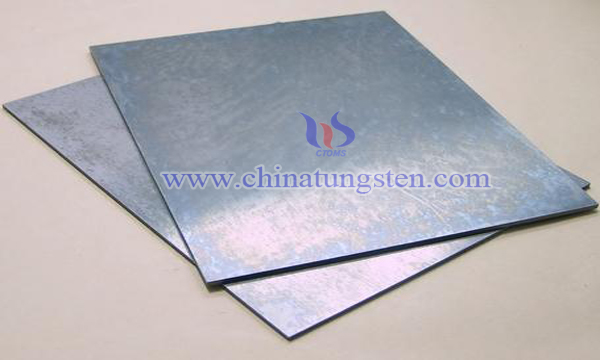Tungsten Slab Preparation by Resistance Sintering
- Details
- Category: Tungsten Information
- Published on Thursday, 23 May 2019 17:24
Tungsten slab is the precursor form of tungsten plate. Tungsten plate is mainly used to make temperature standard light source, tungsten evaporation boat, electron tube shed, heat shield, high temperature furnace component, X-ray tube tungsten target and so on. Satisfactory results have been obtained in these fields. With the continuous development of science and technology, the application of tungsten plate has been expanding, especially in nuclear energy, medical devices and other fields.

In traditional technology, sintered tungsten slabs are mostly sintered by vertical melting or intermediate frequency induction sintering, but these two sintering methods have some shortcomings: the temperature gradient of vertical melting sintering is large, the consistency of sintering density is poor, the consumption of electricity and hydrogen is large, the sintering cost is high, and only products with small single weight can be sintered; the number of voids of tungsten slabs prepared by intermediate frequency induction sintering is large, and there are still a small number of voids. Large pore size results in corner drop and edge drop during subsequent deep processing.
In order to break through the limitation of traditional process, some enterprises have adopted resistance sintering method to prepare large-scale tungsten slab. The process includes:
1. Take the required amount of tungsten powder and select the rubber sleeve or steel sleeve according to the specifications of the pre-production tungsten slab. The required amount of tungsten powder is compactly and evenly installed in the rubber sleeve or steel sleeve, and then sealed.
2. Isostatic pressing (180MPa), pressure relief and demoulding;
3. Sintering by resistance sintering
The sintering temperature by the resistance sintering method is lower than the sintering temperature of the conventional sinter melting sintering, and the temperature rise is slow and the temperature field is uniform, so that the structure and performance of the product can be improved, the yield is high, the energy consumption is small, the economic benefit is high, and the tradition is eliminated. The falling angle and falling edge phenomenon of the process products in the subsequent processing show good machining performance, that is, the number of pores at the grain boundary is relatively reduced, and the method is simple and easy to implement, and is suitable for popularization in the preparation of tungsten slab.
- Tungsten Manufacturer & Supplier, Chinatungsten Online: www.chinatungsten.com
- Tungsten News & Prices of China Tungsten Industry Association: www.ctia.com.cn
- Molybdenum News & Price: news.molybdenum.com.cn
- Tel.: 86 592 5129696; Fax: 86 592 5129797; Email: sales@chinatungsten.com



 sales@chinatungsten.com
sales@chinatungsten.com